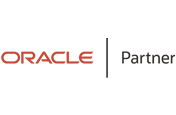We're open through the holidays to support your upskilling goals — book your session today!
We're open through the holidays to support your upskilling goals — book your session today!
Unable to find what you're searching for?
We're here to help you find itOracle Database 19c: Multitenant Architecture Course Overview
The Oracle Database 19c: Multitenant Architecture course is a comprehensive learning path designed to educate database administrators and architects about the new multitenant architecture introduced in Oracle Database 19c. This course explains how to manage both container databases (CDBs) and pluggable databases (PDBs), with a focus on the concepts and practical skills needed to implement and maintain a multitenant environment.
Module 1 delves into the CDB basics, the relationship between CDB and regular PDBs, and the management of Application PDBs. Module 2 covers various aspects of PDB Creation, including CDB and PDB Management, and Storage considerations. Module 3 ensures learners understand Security protocols, Backup and Duplicate strategies, Recovery and Flashback operations, as well as Performance tuning and Resources Allocation. Lastly, Module 4 focuses on Data Movement, Upgrade Methods, and other Miscellaneous tasks.
By mastering Oracle Multitenant Architecture, participants can gain the expertise to efficiently manage and operate Oracle's Database 19c Multitenant Architecture, enhancing the scalability and agility of their database systems.
Purchase This Course
USD
View Fees Breakdown
| Flexi Video | 16,449 |
| Official E-coursebook | |
| Exam Voucher (optional) | |
| Hands-On-Labs2 | 4,159 |
| + GST 18% | 4,259 |
|
Total Fees (without exam & Labs) |
22,359 (INR) |
|
Total Fees (with Labs) |
28,359 (INR) |
Select Time
Select Date
| Day | Time |
|---|---|
|
to
|
to |
Scroll to view more course dates
*Inclusions in Koenig's Learning Stack may vary as per policies of OEMs
Suggestion submitted successfully.
Koenig Learning Stack
Inclusions in Koenig's Learning Stack may vary as per policies of OEMs



